Surveyors use a large variety tools. I’m going to go through my tool bag and list out the tools that I need to carry with me,
Tape Measure
Every survey needs to have a tape measurer with them. Used frequently to measure the height of an instrument or target setup, or to measure objects being surveyed.
There are many different types of tape measures, all with different applications. The ones I have with me are:
Offset Tape
These tapes are ideal for measuring the heights of an instrument or target setup, the distance to an underground service, or measuring the size and shape of an object that can’t be measured fully with the total station.
The benefits of a tape measurer like this is you can measure objects on your own, and a second person isn’t needed to pull and keep the tape tight.
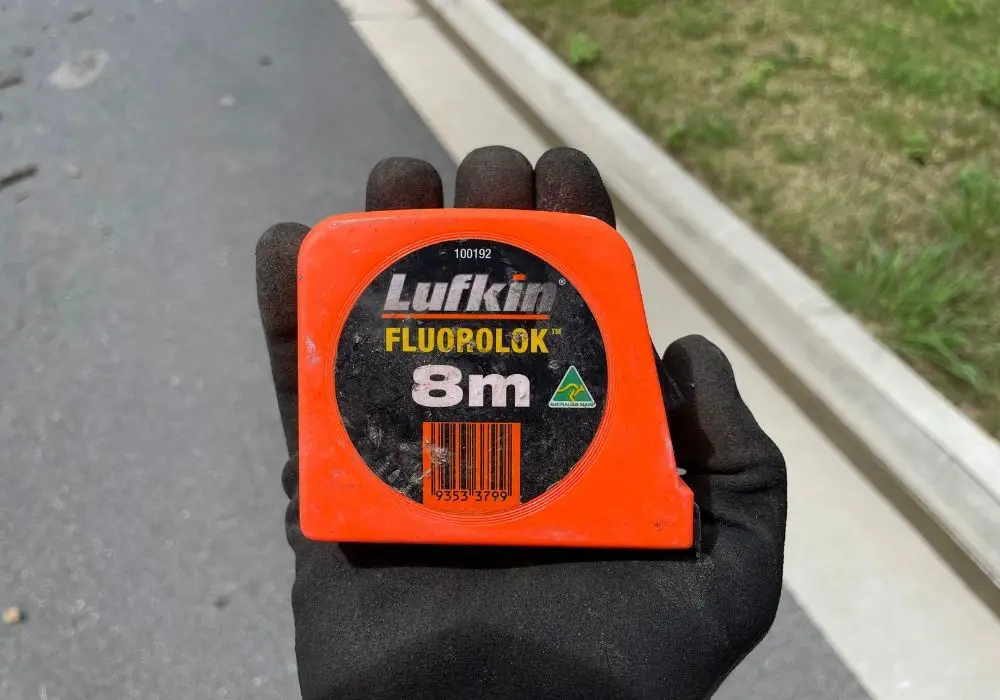
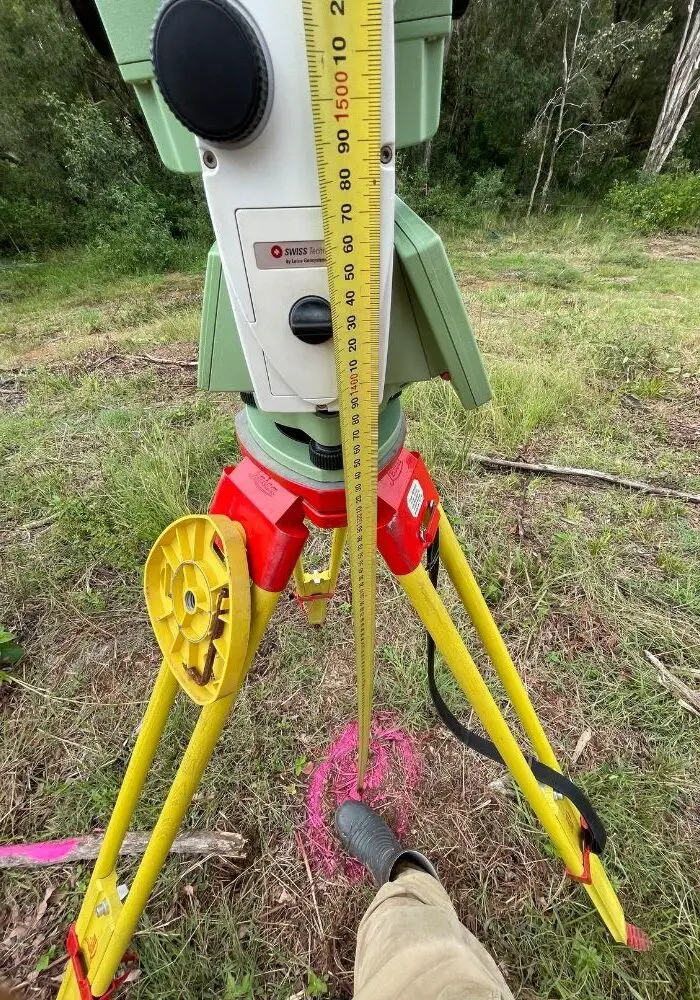
Steel Band
These are ideal for measuring long distances accurately. I’ve used this tape on many SMP projects.
There are some that will be longer than this 30m one, but anything longer than that and it would be more accurate and probably better to used your total station to measure that distance.
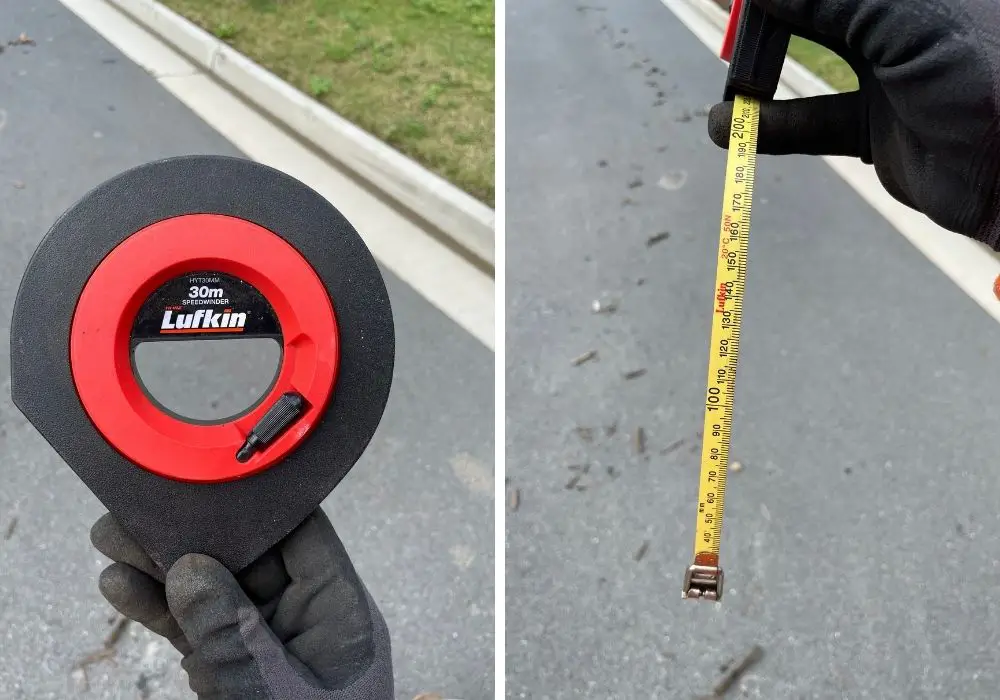
Nylon Measuring Tape
These measuring tapes are suitable to civil and earthwork projects, where they can be used for non-accurate work. They are cheap and replaceable, which means if you accidently cover some of the tape with paint you won’t be too bothered.
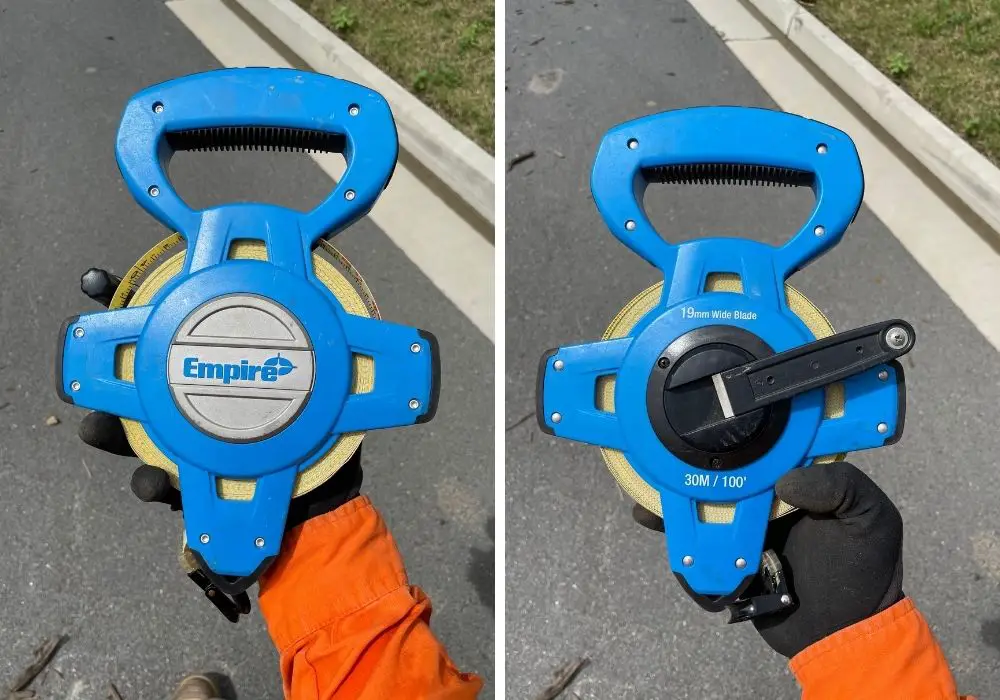
Hammers
I carry three different types of hammers with me for my daily surveying tasks.
Claw Hammer
Good for hitting in concrete nails in a slab, or screws into a drill hole, every surveyor needs to have a good quality claw hammer by their side.
I like the Finska claw hammer as it has some shock reducing features, and when you are using your hammer frequently its best to spend a little more money to reduce the wear and tear on your body.
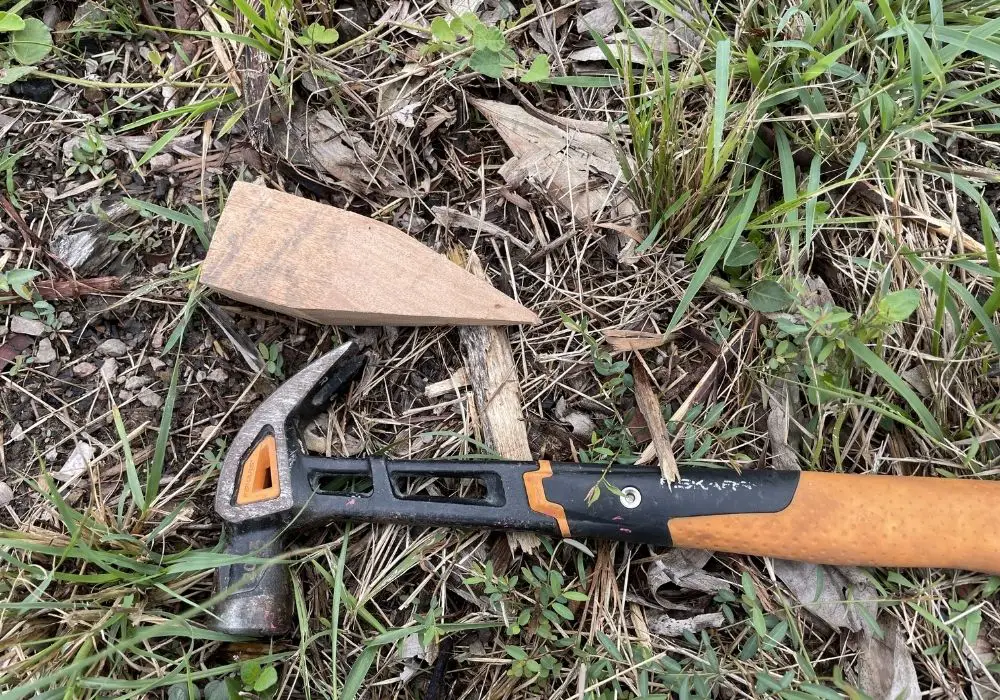
Sledge Hammer
For hitting in stakes and pegs, every surveyor needs to have a sledge hammer on hand.
The weight of my sledge hammer is 4.5kg, I wouldn’t think you would want a sledge hammer that is lighter that this, too much lighter and it will have trouble hitting stakes and pegs in hard and compact ground.
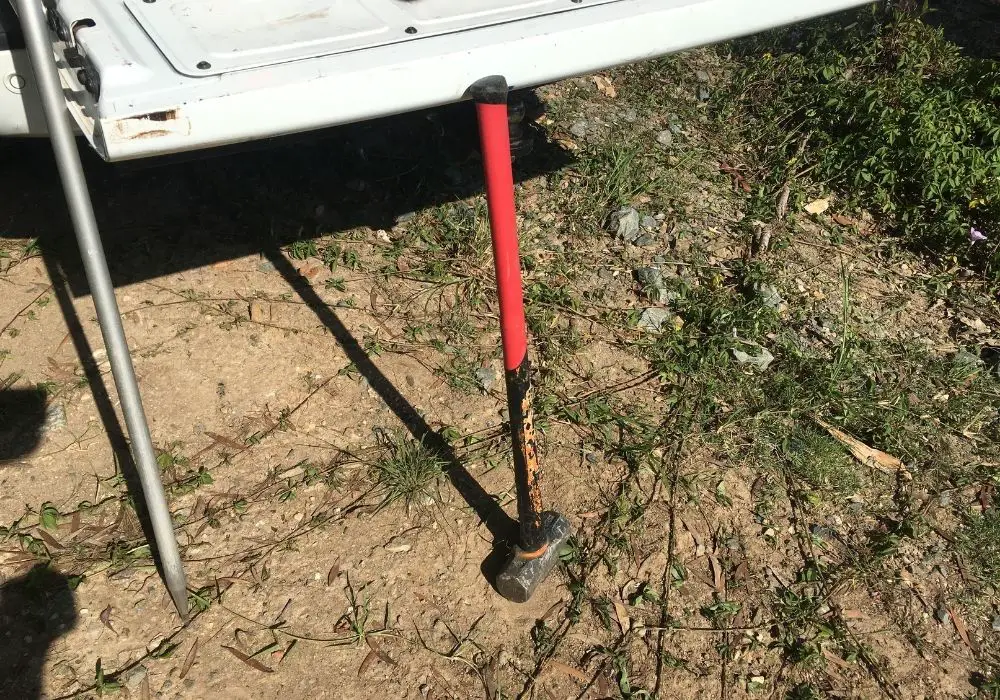
Club Hammer
When doing stake in soft ground, instead of carrying around a heavy sledgehammer I like to use my club hammer (also called a gimp hammer or a lumpy hammer).
Weighing between 1-2kgs, a club hammer can be holstered in your field bag hammer holder and be easily carried around site on your person.
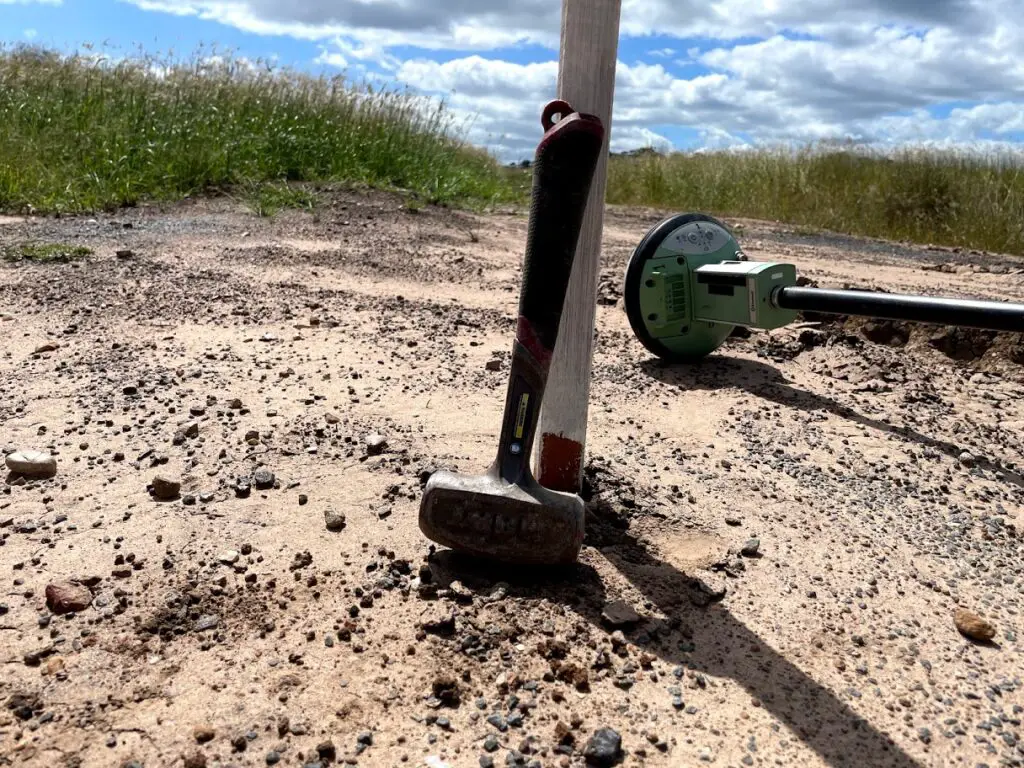
Drill
A surveyor needs to have a drill handy to place survey marks in concrete. I used to use a hammer drill to drill holes for survey marks in concrete footpaths or kerbs, but “upgraded” to an SDS drill.
The SDS drill fulfils the basics of being able to drill into concrete, but it also has the capacity for a larger drill bit that can drill holes for wooden survey stakes.
I drill holes for stakes when the ground is too hard to hit the stake in with just a hammer. I use the SDS drill and a 20mm masonry drill bit to drill a pilot hole, then I can use my club hammer to hit the stake in.
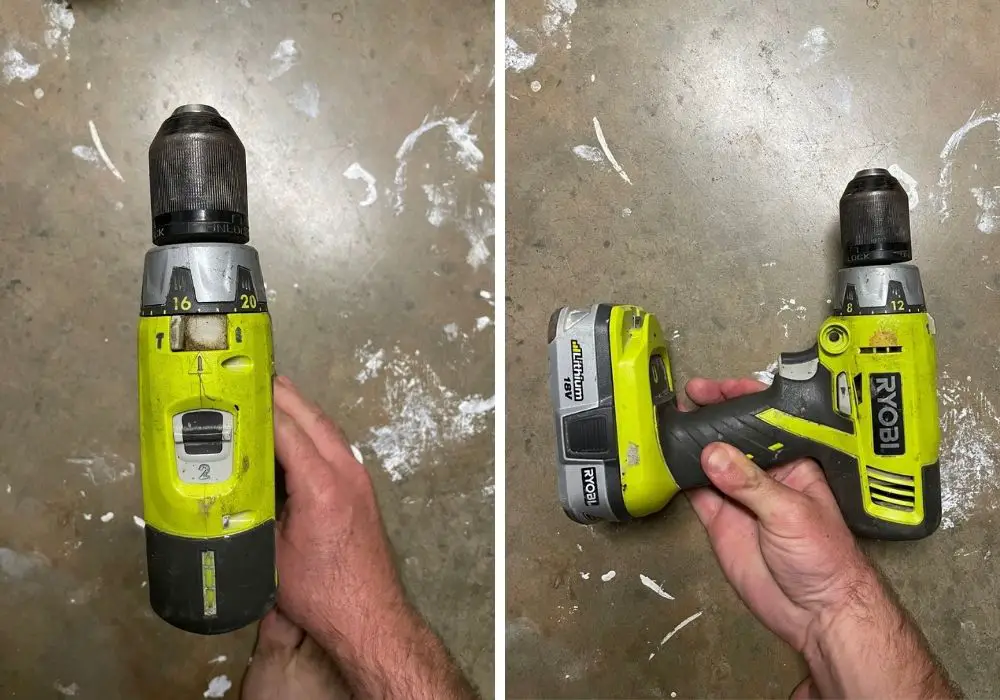
Bush & Tree Clearers
Brush Hook
Machette
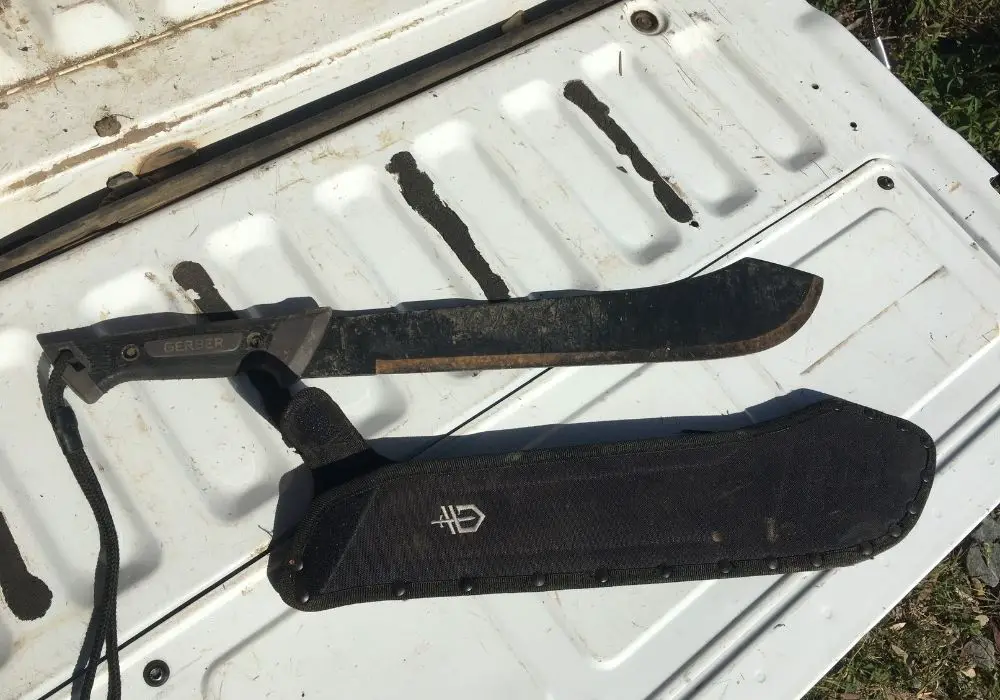
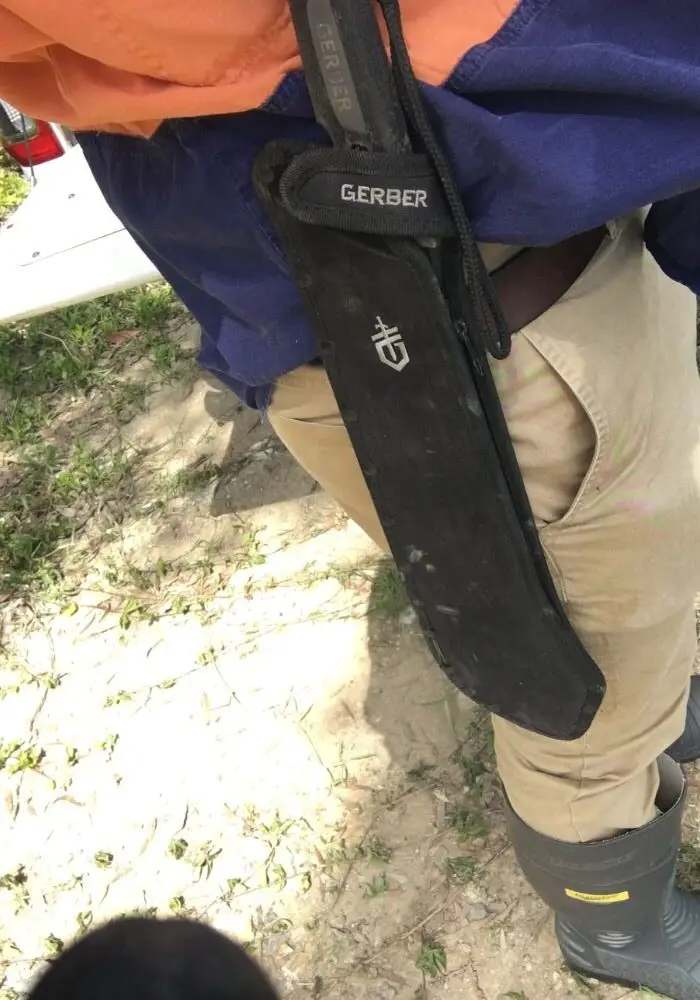
Bags
Field Bag

Stake Bag

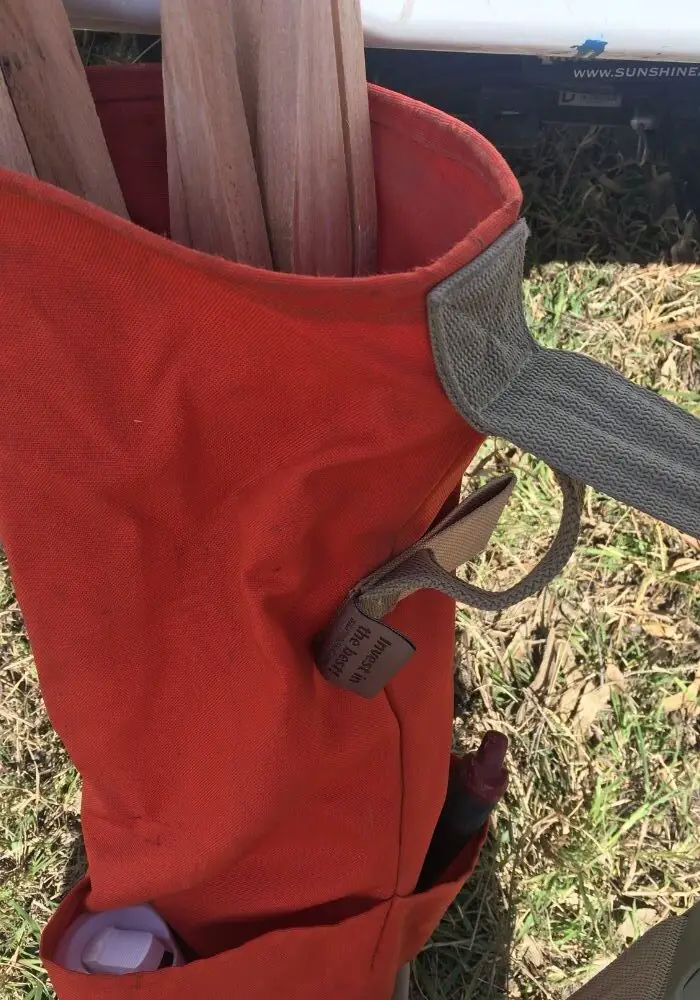
Tool Bag
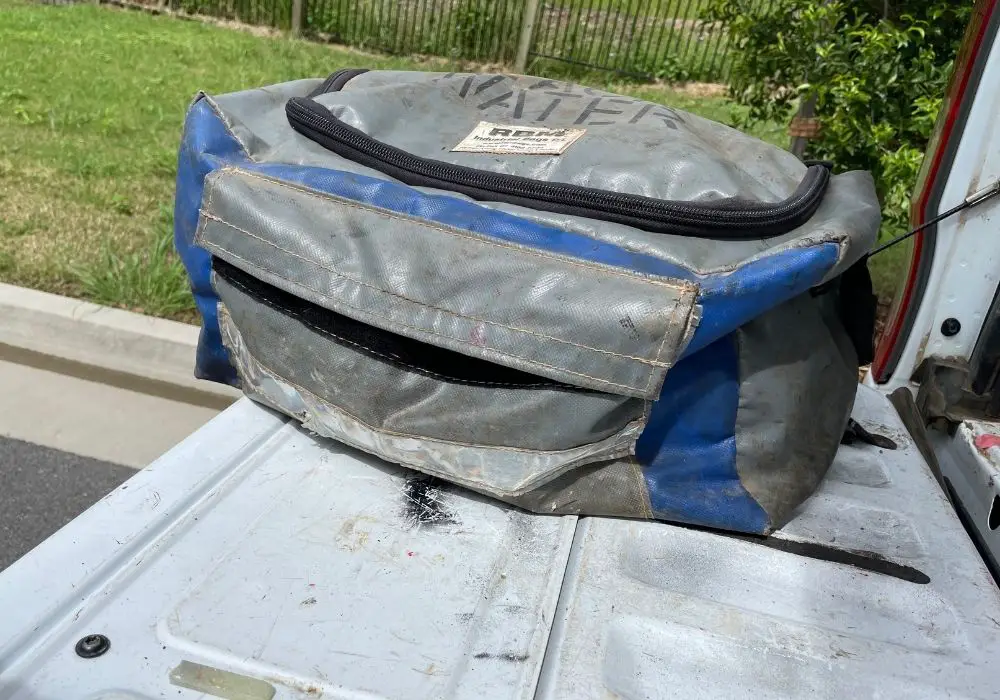
Water Containers
Water Bottle
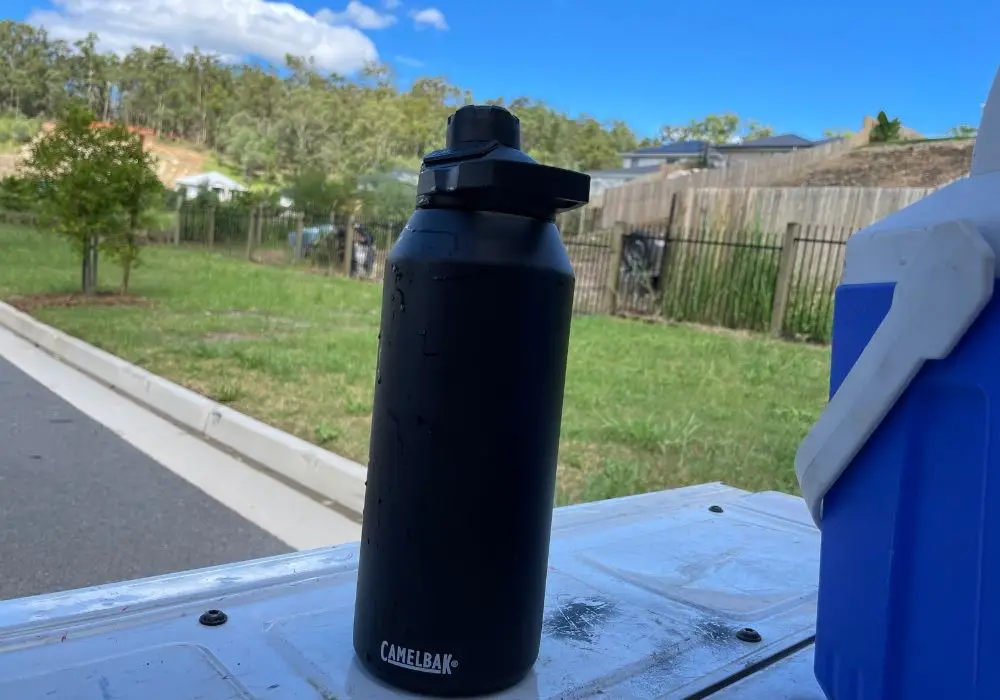
Water Jug
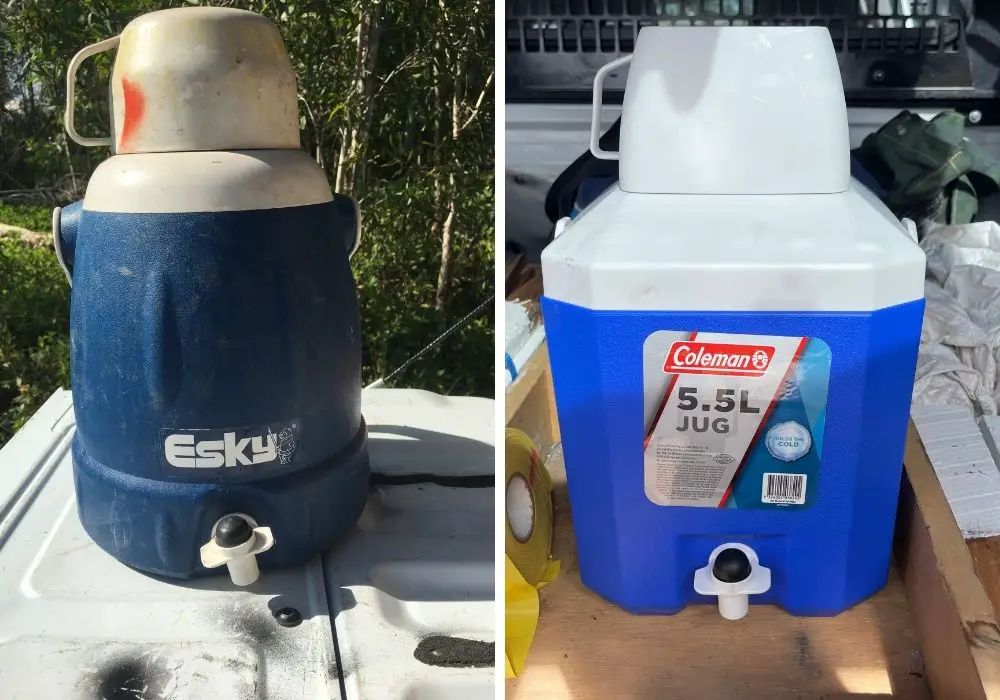
Hydration Pack & Backpack
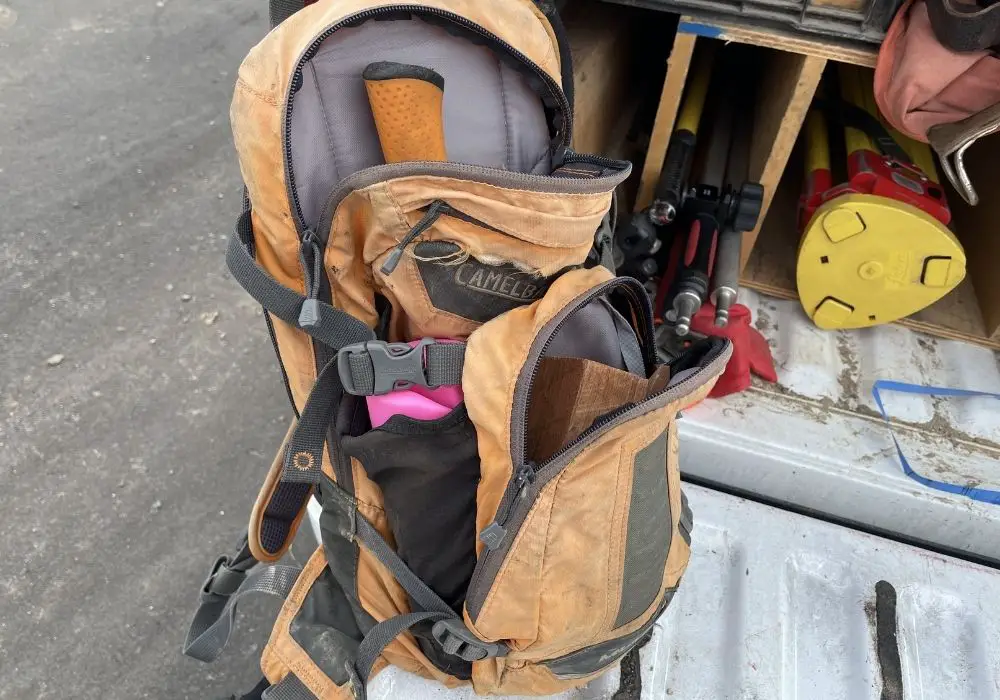
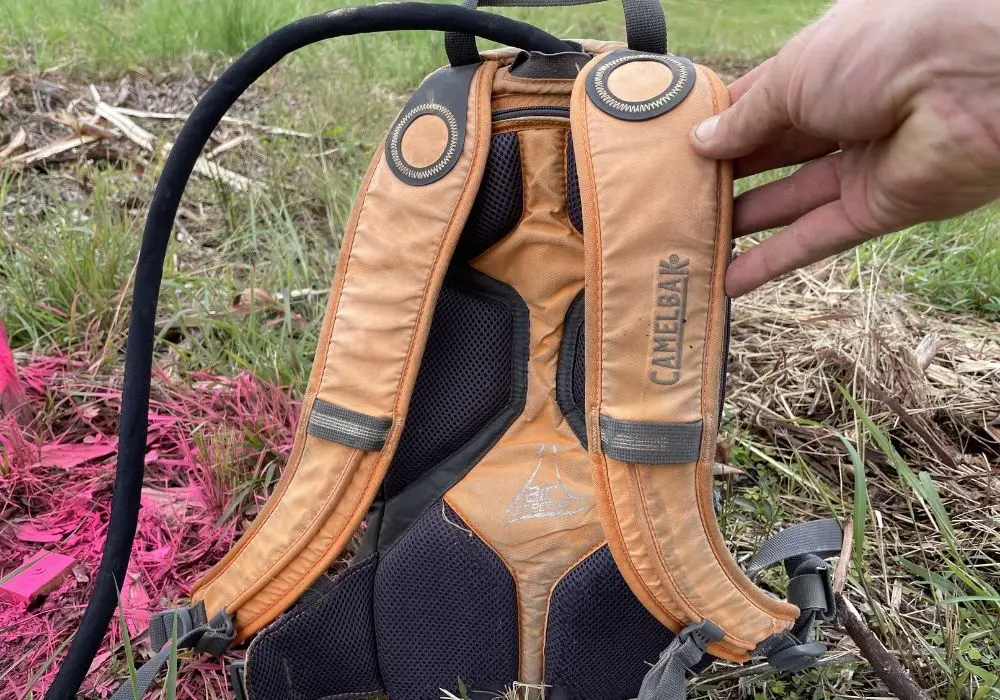
Tool Sharpeners
If you are regularly using a machette, brush hook or axe in the field you will need some tools to sharpen them on the go.
A rats tail file and a pocket axe sharpening stone will sharpen a dull blade in minutes.

Pipe Centre Finder
If working on a SMP or just surveying some piping, this tool will help with as-constructed surveys of pipe.
The miracle point finds the centre top point on a circular pipe. This or a curvomark is an essential tool for any surveyor doing any SMP work.

Plumbob
There aren’t many times that a plumb bob is needed for most of todays surveyors. I still have one with me for the odd occasion i do need it.

Scribe
A scribe is needed when marking out marks or setout points on steel.
The one I have I got from eBay and came with several replacement tips. The tips have been very tough so far and my first tip has last several years.

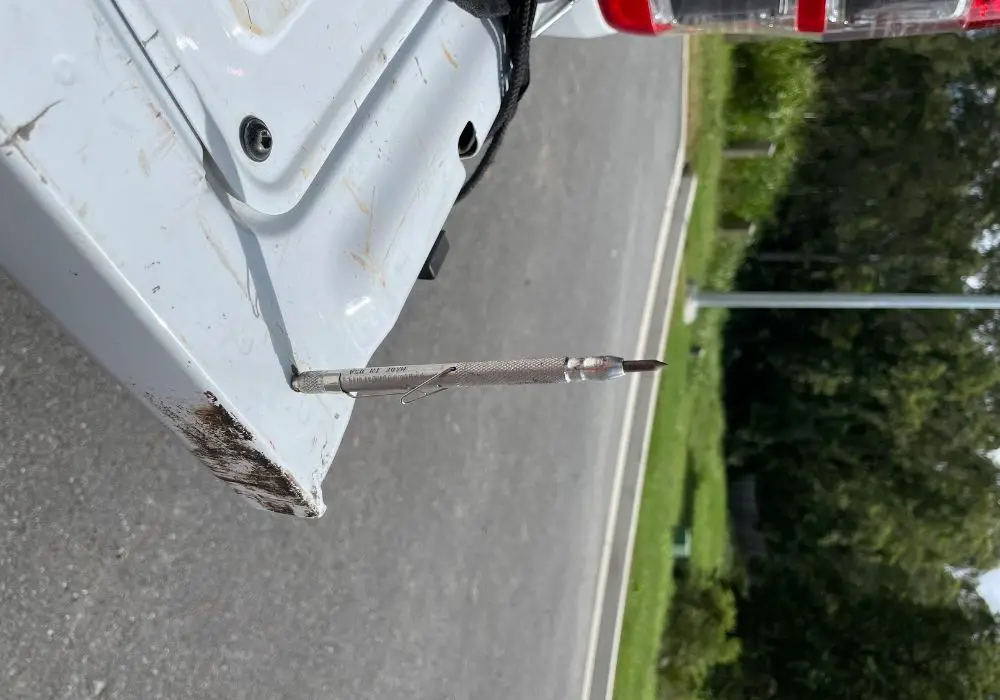
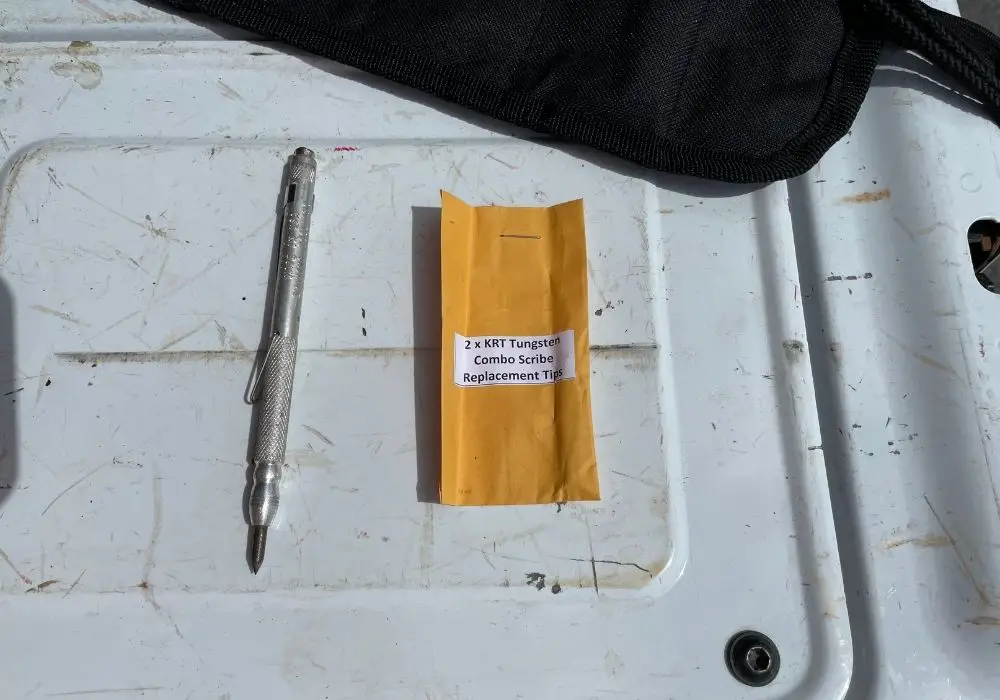
Thermometer
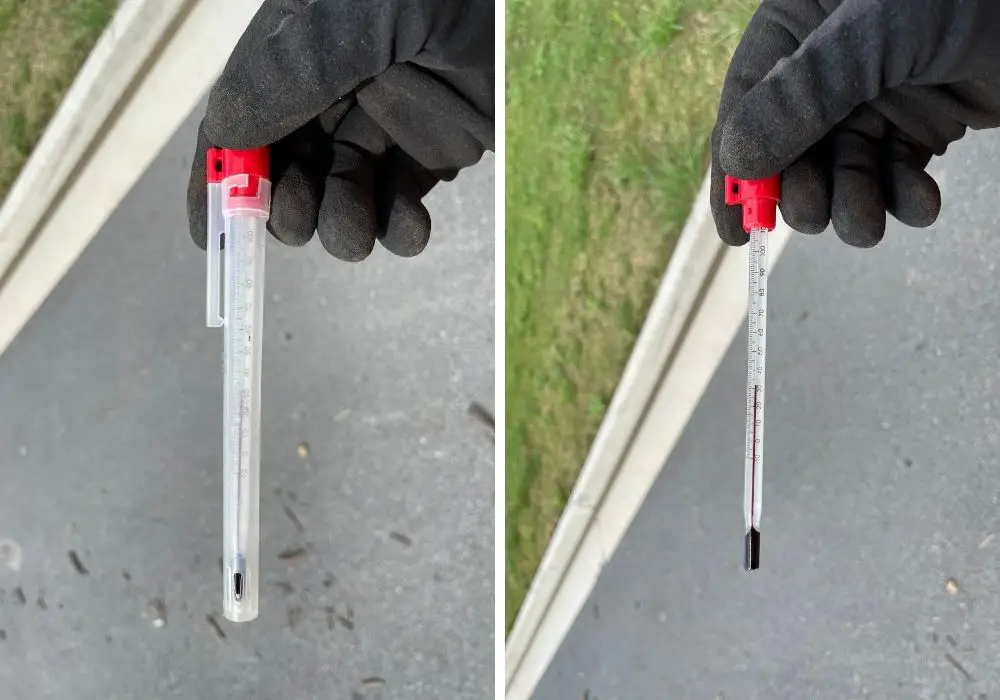
Pliers
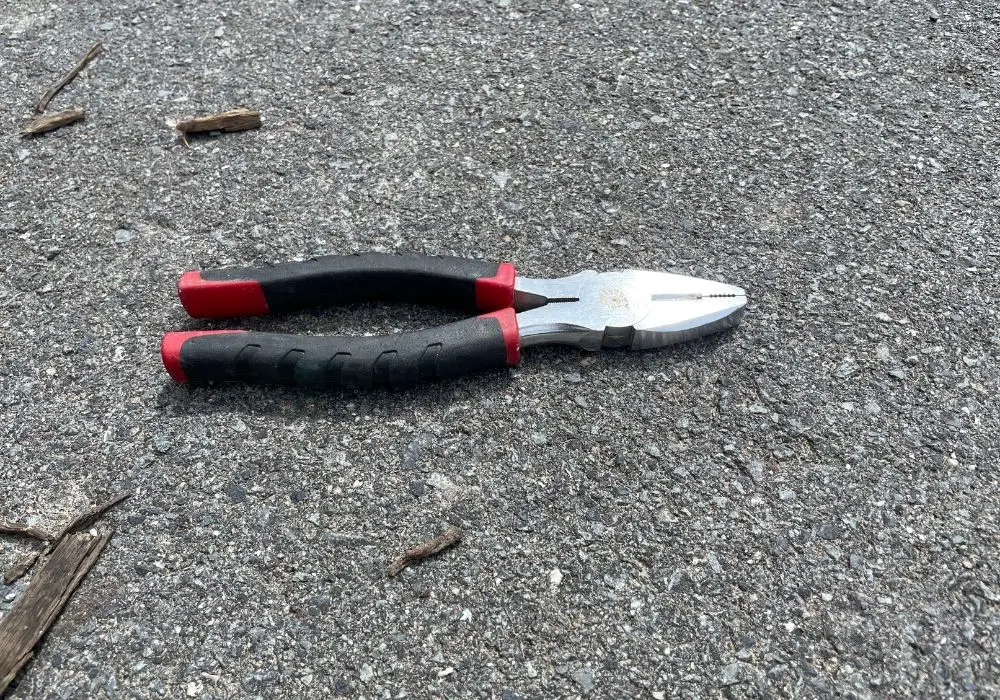
Snips
Magnetic Tribrach Holder
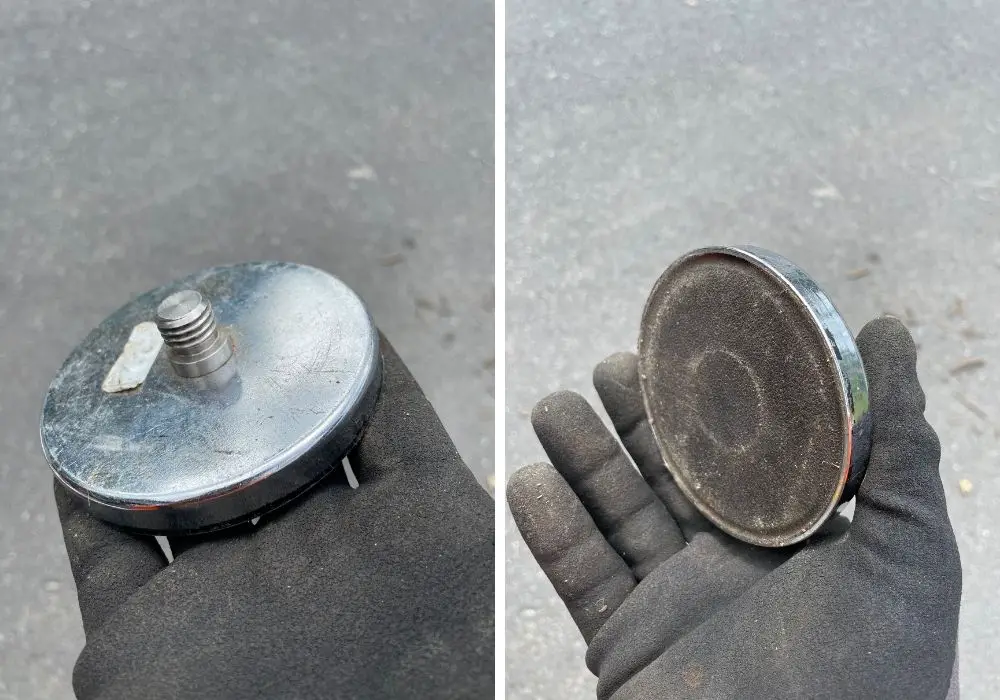
Cold Chisel
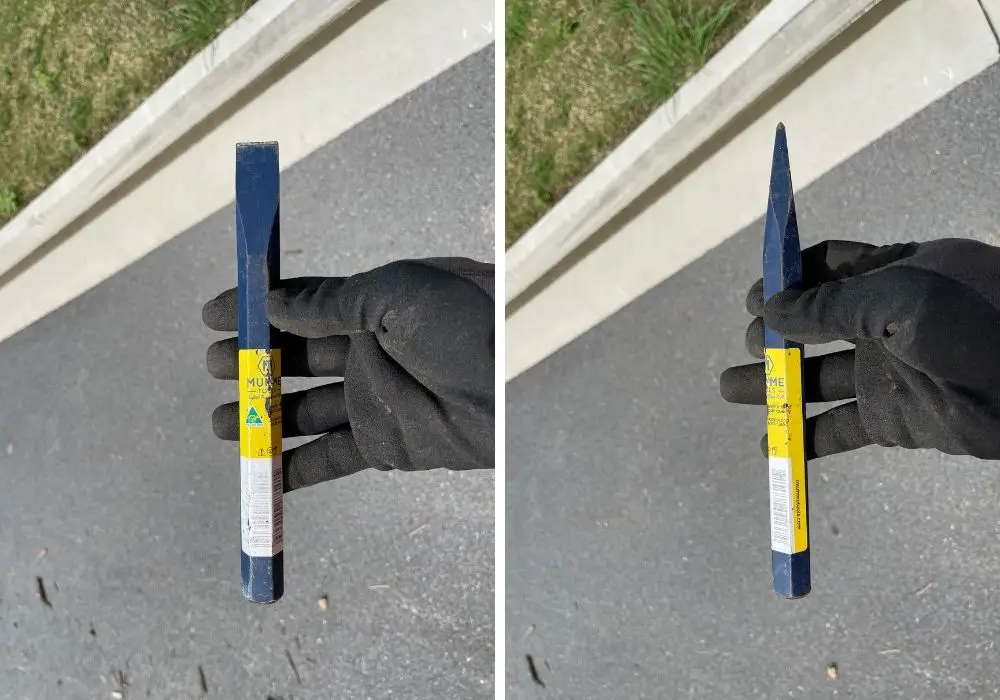

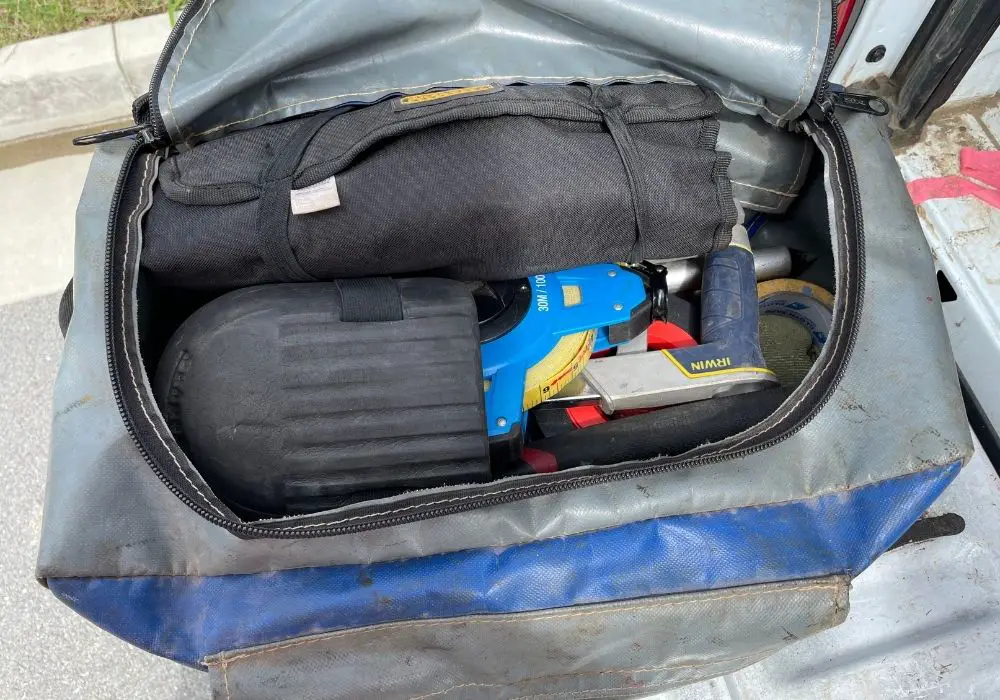
Comments are closed.